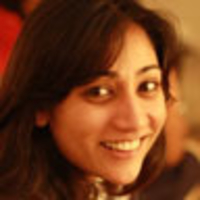Pakistan is always in conflict with itself, and nowhere is this tension more tangible than in the busy, bustling, and battered city of Karachi. Since the birth of Pakistan, residents of all provinces have made their way to Karachi, the country's largest and most modern city, hoping they get the opportunity to build the life they want. Sindhi, Balochi, Punjabi, Urdu-speaking or Pakhtun, Karachi is where they all come, and also where they clash. Ethnic violence prevails, political opponents kidnap and kill, and religious sects battle on the streets. Nobody—not even the police—dares to intervene. Meanwhile, the rest of Pakistan follows suit, with unrest in Balochistan due to its separatist movements and dissent in the north after the re-naming of the Northwest Frontier Province to "Khyber Pakhtunwa." Despite all of this, the cosmopolitan Karachi hosted its second Fashion Pakistan Week, a forum that has managed to bring together a band of 52 designers of various ethnicities who have incorporated different parts of the country into fascinating creations.
Click Image to View Our Gallery of Pakistan’s Fashion Week

This season, 35-year-old Samar Mehdi, a Karachi-based designer with a degree in fashion and accessory design from Bristol in the U.K. has strayed from her usual non-ethnic and modern design. Instead, she has experimented with colors and embroidery inspired by the women of the Thar Desert, which lies in the eastern part of Sindh. Despite having one of the most colorful and diverse cultures in the country, Tharri society and its desert lifestyle is still relatively unexplored by the rest of Pakistan. In her collection, Mehdi brings to light the maroons and deep yellows that dominate the region, and implies the intricate mirror and thread work along with the motifs that grace Tharri clothes. "I first visited Thar 14 years ago when I worked on a project for college and have been fascinated with that place ever since," recalls Mehdi. "The women were so inspiring. They led hard lives but their clothes were so bright and jewelry so shiny—the paradox was beautiful." Her collection, which showcased on Fashion Week's opening night, was titled “Ambience—The Land, The Woman, and her Man.”
Another Karachi-based designer, Obaid Sheikh, who said he has always been fascinated by his mother's homeland of Punjab, traveled all the way to Lahore to learn the traditional style of gota, a cloth embellishment that is distinctive of Punjabi culture. For his "Punjaamni" collection, which he showcased on the second day of Fashion Pakistan Week, Sheikh learned how to make flowers and leaves out of shimmery gota lace in Lahore, so he could come back and introduce this new skill to his tailors in Karachi. "People generally conceive this kind of embroidery work to be backward and cheap," says Sheikh. "I learnt it and put it on the most modern cuts I could think of—frocks, skirts, and pants—and got my collection."
Many others experimented with local cuts and colors. Abdul Samad’s entire collection revolved around the ajrak, a maroon and black patterned piece of cloth, which is a staple clothing item all over Sindh. On the first day, Monia Farouqui displayed her creations, some of which were covered with Kashmiri embroidery. Zahid Khan's menswear line played with designs from all over the country, such as the rilli cloth from Sindh and phulkari, an embroidery technique from Punjab.
“Fashion is a reflection of the times we live in, and this week we showed a side of our people that hasn’t been visible in a long time,” said Ayesha Tammy Haq, CEO of the Pakistan Fashion Design Council. “Every part of our country was on the ramp, from the Arabian Sea to the Karakorum, in its most beautiful and pure form and everybody loved it.” And they did indeed. The last day ended with a standing ovation and thunderous applause. Entire collections sold out before the week even ended. This certainly is a side of the city a Karachiite like myself wishes she could see more often.
Anam Mansuri completed her undergraduate degree in journalism from NYU and then returned to her hometown Karachi, where she now works as the editor of Women's Own Magazine. She has also written for Blackbook Magazine.






